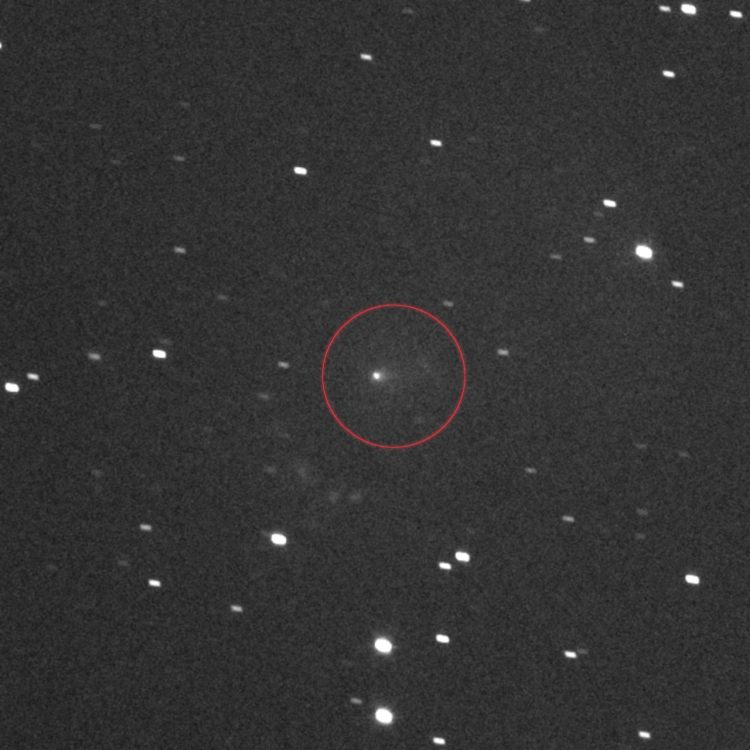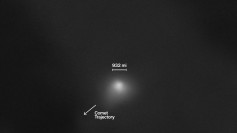Astronomers are intensifying their scrutiny of the interstellar object 3I/ATLAS as new modeling data raises questions about its upcoming March 2026 encounter with Jupiter, prompting speculation about whether the object's precisely timed passage is the result of natural forces or something engineered. The debate has escalated as calculations from NASA's Jet Propulsion Laboratory (JPL) shifted in recent weeks, altering expectations for 3I/ATLAS's closest approach to Jupiter while analysts examine the object's unusual acceleration profile and patterns of luminosity.
The reassessments come as observers confront a striking numerical alignment: the projected perijove distance of 3I/ATLAS appears to match-or nearly match-Jupiter's Hill radius, the gravitational boundary that determines whether an object can deposit material into a stable orbit around the gas giant. In material circulated online, researchers noted that earlier calculations placed the perijove at 53.445 (+/- 0.06) million kilometres, nearly identical to Jupiter's 53.502 million kilometres Hill radius. Such proximity has become a focal point in arguments that the path may be optimized for releasing a small payload into Jupiter's orbit.
Underlying these discussions is the volatility in the object's non-gravitational acceleration, known as A1. On October 30, 2025, the listed value was 1.6×10⁻⁶ au per day². By November 24, the figure had fallen to 4×10⁻⁷ au per day², according to the article cited by News.Az. Shortly afterward, NASA's JPL Horizons revised the A1 value again, down to 6.8×10⁻⁸ au per day squared, incorporating a new 1/r² sublimation model typically used for carbon-dioxide-driven outgassing.
The updated JPL model now forecasts a perijove distance of 53.587 (+/- 0.045) million kilometres, slightly outside Jupiter's Hill sphere. Analysts caution, however, that this result depends heavily on assumptions about mass loss at large heliocentric distances rather than behaviour near perihelion, where direct observations remain constrained.
Observational data from telescopes complicate these assumptions. A Hubble Space Telescope image from July 21, 2025 showed the coma dominating overall luminosity, consistent with rapid mass loss. Additional research, including work by Qicheng Zhang and Karl Battams, suggested a much steeper luminosity relationship - 1/r⁷.⁵ inside 2 au - which, if applied, would imply far stronger acceleration near the Sun than the 1/r² model allows.
Supporters of revising the model argue that adopting a steeper profile could again place the perijove distance nearer the Hill radius, reviving concerns about a non-random trajectory. "The rare coincidence between the perijove distance of 3I/ATLAS and the Hill radius has a statistical likelihood smaller than 0.00004," the report noted, adding that the agreement could constitute "the most remarkable anomaly of 3I/ATLAS so far."
Planetary-defense specialists are preparing for new datasets from spacecraft including Juno, Juice, and Psyche, which will collect high-precision astrometric measurements as the object approaches Jupiter. Because 3I/ATLAS was hidden behind the Sun during its perihelion passage, researchers currently have only integrated positional drift rather than detailed measurements of how its acceleration changed at closest solar distance.
The upcoming encounter has drawn interest beyond traditional academic circles due to proposals that a controlled trajectory could enable a probe release at Jupiter's Lagrange points L1 or L2. These gravitational pockets would allow long-term "sentinels" to remain in position with minimal fuel expenditure, leading some to question whether 3I/ATLAS could serve as a delivery mechanism.




